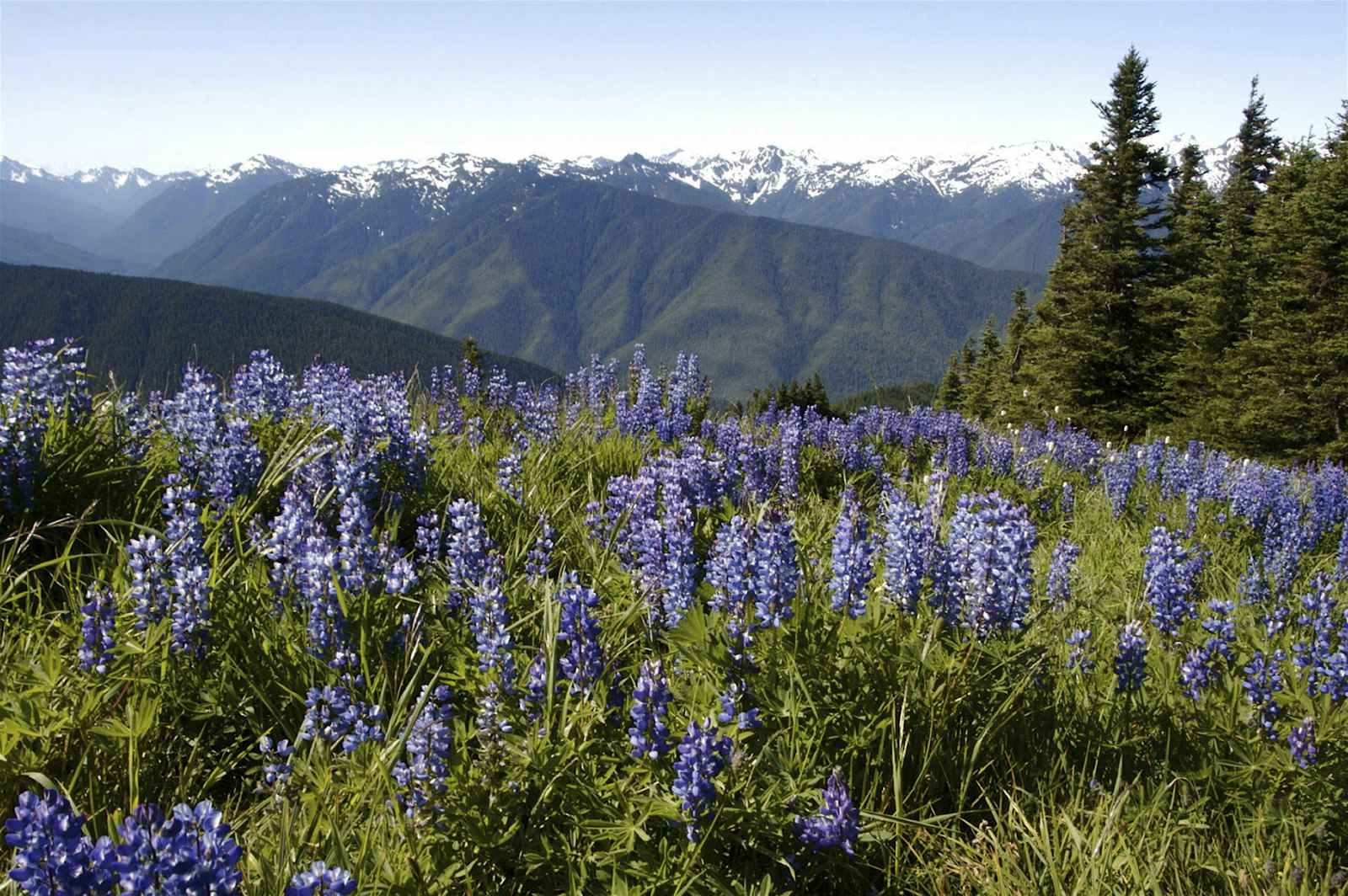
Olympic National Park

Thousands of tired, nerve-shaken, over-civilized people are beginning to find out that going to the mountains is going home; that wildness is a necessity.
Originally established as a national monument in 1909, the area was re-designated Olympic National Park by President Franklin Roosevelt in 1938. In 1976, it became an International Biosphere Reserve, and in 1981 was designated a World Heritage Site.
Covering nearly one million acres, Olympic National Park provides three distinct ecosystems—glaciated mountains, rugged Pacific coastline, and lush temperate forests—and their distinct flora and fauna for nature-lovers to explore. Over 95% of the park is designated wilderness, protecting one of the largest wilderness areas in the lower 48, giving visitors the opportunity to experience remoteness and pristine nature in a way that few other places can.
The 73-mile long coastline has rocky headlands, sandy beaches, thriving tidepools, erosion-formed offshore sea stacks, that provide habitats to marine and intertidal wildlife. The diverse forest communities making up the park provide homes to everythings from acid-loving wild cranberry bushes to giant spruce trees, hundreds of years old. The towering mountain ranges created by tectonic collision are topped with ancient glaciers. The neighboring ecosystems give visitors of Olympic National Park an opportunity to see sea otters, whales, beavers, bears, rhinoceros auklets, golden eagles, and more. The park is also home to endemic species like the Olympic marmot and the Olympic torrent salamander that can be found nowhere else in the world.
The Foundation has been working to connect children to the park to inspire a new generation to protect crucial wildlife habitat at Olympic National Park.
Park Updates
-
UpdateNPF Supports Six Postdoctoral Fellows to Advance Science Research in National Parks
-
UpdateNPF Invests in Park Partner Organizations to Further Capacity-Building Goals
-
UpdateNPF-Supported Service Corps Named Project of the Year
-
UpdateNPF’s ParkVentures Program Awards $2.2 Million to Affinity Groups
-
Update$4.4 Million to Fund 99 Open OutDoors for Kids Projects for 2023 – 2024 School Year, Hitting Program Milestone
-
UpdateWomen’s History Fellow Crafts Collaborative Digital Exhibit
-
UpdateReflecting on a Year of Achievements in Our National Parks
-
UpdateInvesting in the Next Generation of Park Stewards